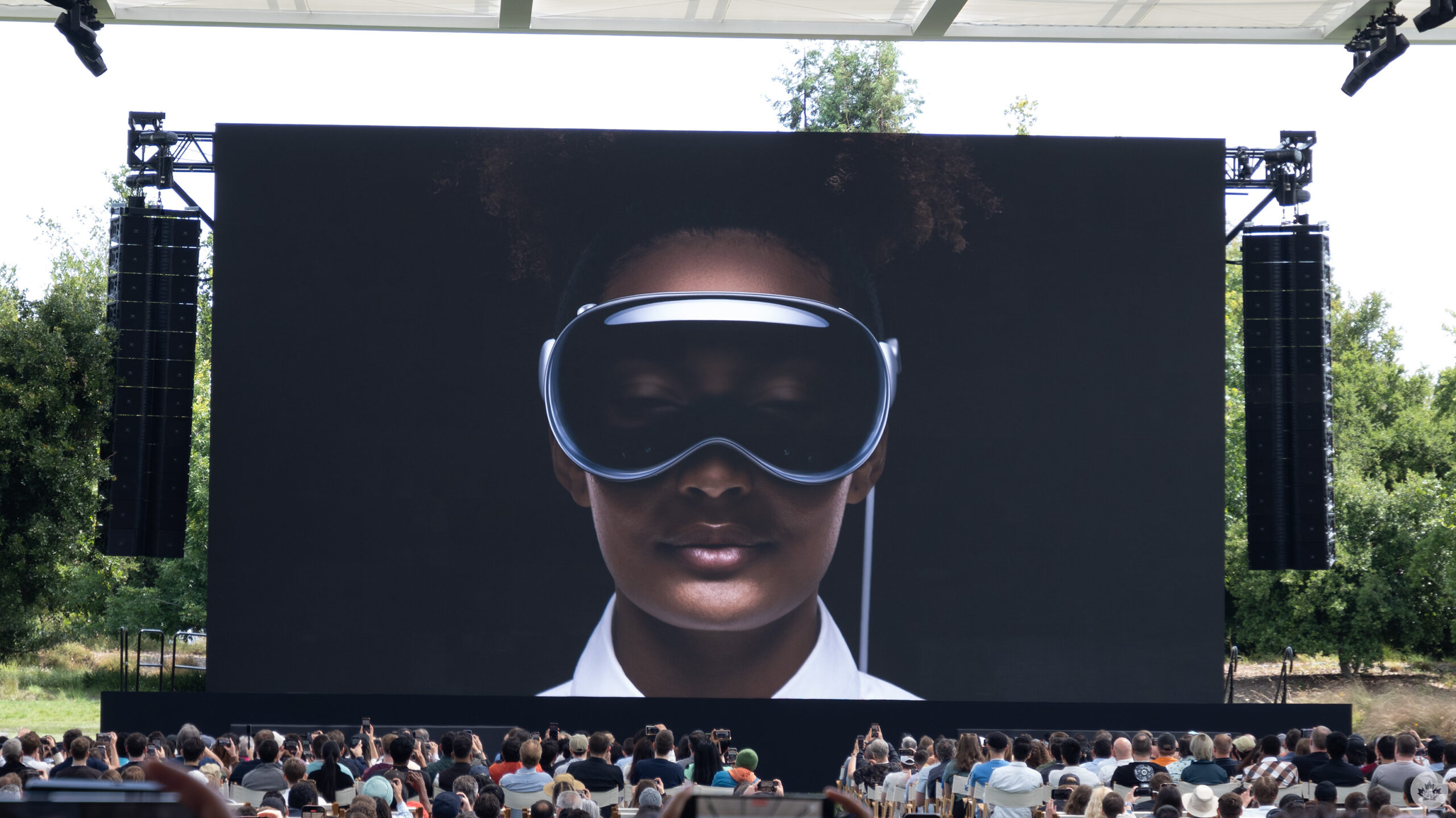
After months of rumours and speculation, Apple finally revealed its mixed reality headset, dubbed ‘Vision Pro,’ at its Worldwide Developer Conference (WWDC).
Apple called Vision Pro the introduction to ‘spatial’ computing. The headset lets users see through it and calls up content over top of your environment. It can be controlled via gestures. Users can also switch into immersive ‘environments’ that transform surroundings into different places, like a forest.
Vision Pro can be controlled entirely by your hands, eyes and voice. Apple says users can look around the interface using their eyes, with eye tracking highlighting different elements. Moreover, you can rest your hands where it’s comfortable, like on your lap, while still controlling Vision Pro with gestures. Voice commands through Siri enable interactions with Vision Pro as well.
The headset supports ‘EyeSight,’ a feature that allows others to see your eyes so they know when you’re looking at them. It can also hide eyes so indicate when the user is in an immersive experience and can automatically clear parts of the interface to reveal people when they approach.
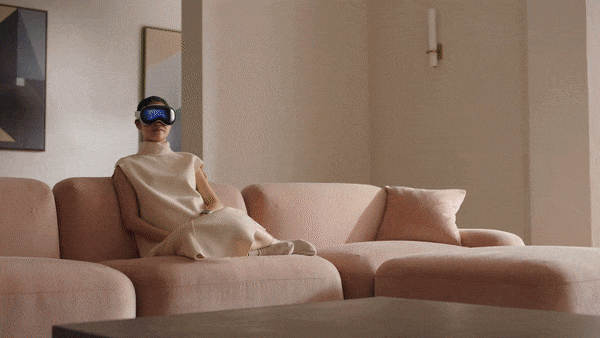
Image credit: Apple
Apple’s new headset also boasts new software, including the rumoured xrOS operating system. Apple showed off several optimized apps for the headset and says it can sync with what’s on your Mac or iPhone. Vision Pro allows users to arrange their apps around them in space, such as arranging apps around your head so you can turn to look at them or stack them on top of each other. The headset also enables viewing 3D objects in space.
Vision Pro works with existing accessories, like keyboards and mice, as well as with Mac computers. Simply open your MacBook and the screen will automatically pop into Vision Pro, allowing for much more screen space than what you’d usually have on a MacBook.
Apple also shared FaceTime for Vision Pro, allowing users to view video feeds in their space.

Image credit: Apple
The company showed off how Vision Pro works with photos, such as panoramas, which are immersive when viewed through Vision Pro. The headset also offers Apple’s first 3D camera, which can capture ‘spatial’ photos and videos that you can view in 3D with the headset.
Vision Pro offers a cinematic experience by dimming the lights when you watch content. Alternatively, users can pop into a theatre environment for an immersive, big-screen experience. Vision Pro works with 3D movies, as well as Apple Arcade games. Apple says there will be over 100 titles to play on day one. Apple brought Disney CEO Bob Iger to the stage to announce that Disney+ would be available on day one on Vision Pro, teasing expanded streaming content with custom environments and more.
Vision Pro design and capabilities
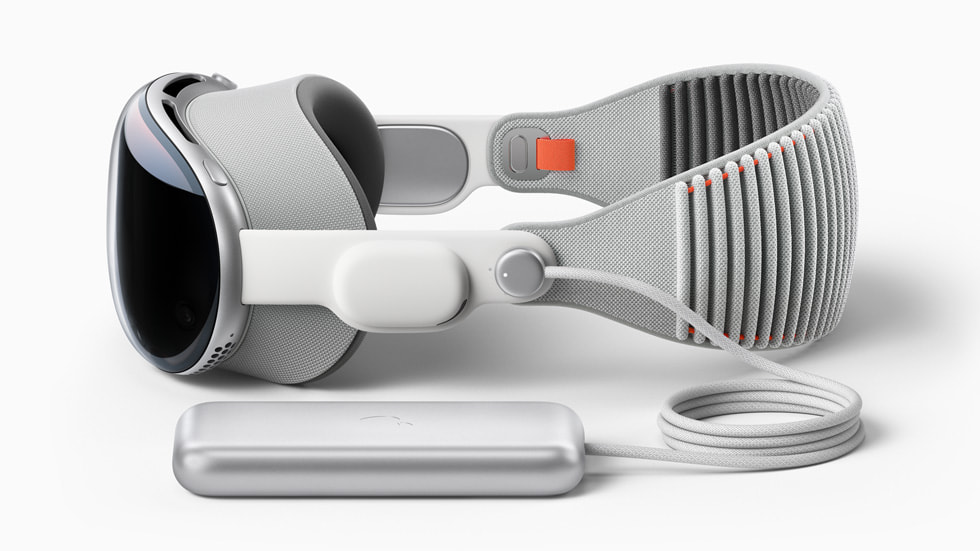
Image credit: Apple
The front of the Vision Pro headset is made of glass that allows the wearer — and the headset’s various cameras — to look at the environment. Apple says it made the Vision Pro modular to ensure a more precise fit, while the band uses “3D knitting” to enable better breathability and comfort. For glasses wearers, Apple teamed with Zeiss to create customer snap-in vision lenses that don’t interfere with eye tracking.
When it comes to the displays, Apple says there are 23 million pixels in the two screens, capable of rendering 4K30 video across the two displays. The screens use micro-OLED technology. On the audio side, Vision Pro offers Spatial Audio through two individually amplified drivers in audio pods on each side of the headband. The pods provide personalized Spatial Audio based on users’ head and ear geometry.
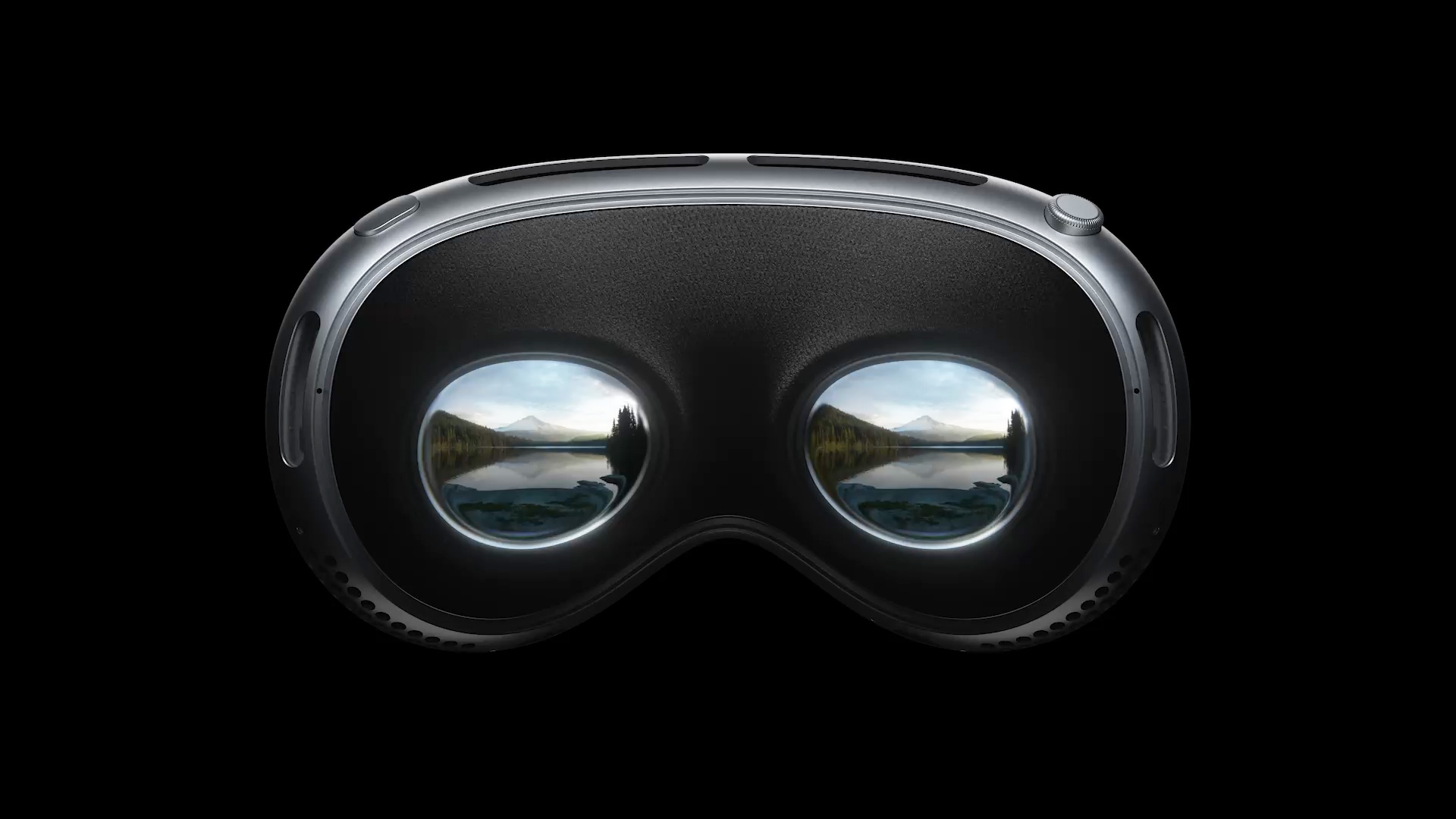
Image credit: Apple
Vision Pro sports an all-new R1 chip to process input from the 12 cameras, five sensors and six microphones to ensure content appears in front of users’ eyes in real-time. The headset also has an M2 chip to power apps. Apple says Vision Pro can be used while plugged in or for up to two hours with its external battery pack.
Vision Pro creates a ‘digital persona’ to replicate your face so that people can see you in video calls since the headset would otherwise prevent this.
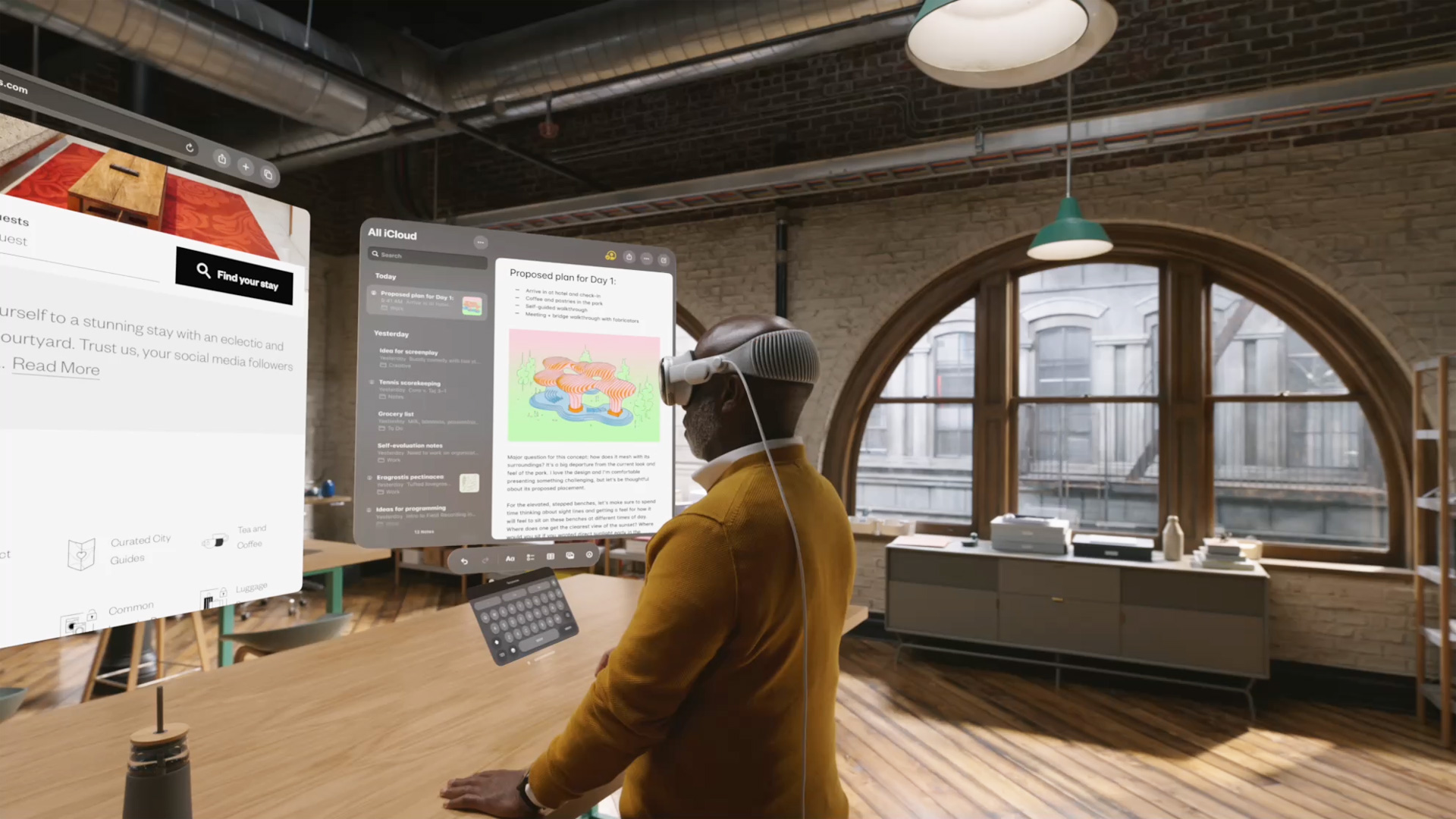
Image credit: Apple
Apple’s visionOS software powers the Vision Pro headset. The company calls it the “world’s first spatial operating system.” The main pitch of visionOS is that it “frees apps from the boundaries of a display” for better multitasking and more immersive experiences.
Apple showed off several third-party apps on Vision Pro, including Microsoft apps like Word and Teams, apps that display 3D models of hearts and cars, and more. The company says developers can use many of Apple’s existing software kits to develop for visionOS. Plus, visionOS includes iOS and iPadOS app support so existing apps will work on it.
visionOS will have an all-new app store for visionOS apps.
Privacy and security
Vision Pro features ‘Optic ID,’ a new authentication system that uses the wearer’s iris to authenticate them and unlock the device. Moreover, Apple claims data about where you look isn’t shared with apps and instead happens in a background process so it’s protected.
The Vision Pro will cost $3,499 (roughly $4,696.11 CAD) and will be available early next year in the U.S. with other countries to come later.
You can learn more about Vision Pro here.
For all of our WWDC 2023 content, follow this link.


